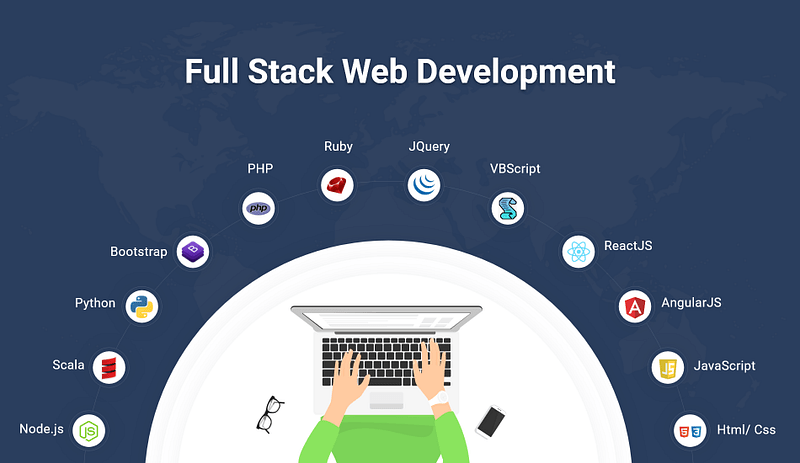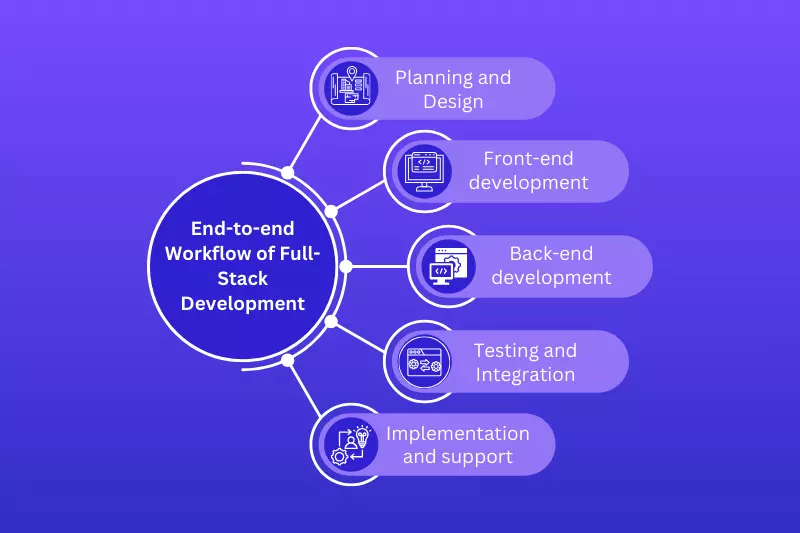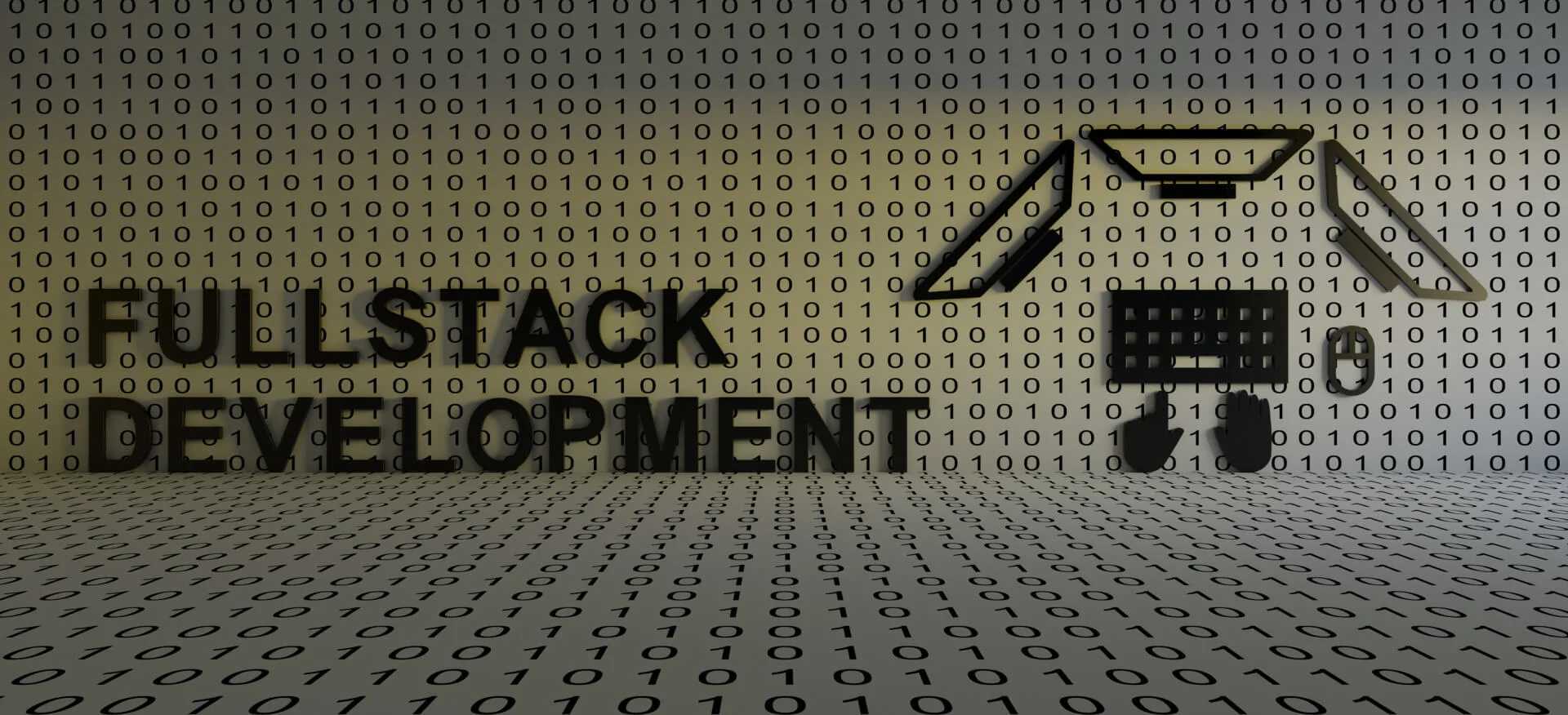In today’s fast-moving digital world, software development is one of the most in-demand skills. Businesses everywhere are creating web apps, mobile apps, and complex systems to meet the growing needs of users. Among the many roles in tech, Full Stack Development stands out as one of the most flexible and valuable. So, what is Full Stack Development? It’s the ability to work on both the front end (the part you see and interact with) and the back end (the server, database, and behind-the-scenes logic).
Basically, Full Stack Developers understand the full picture, from designing user interfaces to managing data and servers. This allows them to take an idea and turn it into a complete, working product, which is a key part of delivering Digital Transformation Services effectively. What makes Full Stack Development even more interesting is that it’s not tied to just one language or framework. Instead, it’s a mix of tools, technologies, and methods that let developers handle every layer of software development. That’s why Full Stack Developers are often considered the “all-rounders” of the tech world.
What is Full Stack Development?
Full stack development refers to the end-to-end process of building full stack applications, covering both the front end (the user interface that people see and interact with) and the back end (the business logic, workflows, and server operations that run behind the scenes).

2 Main Components of Full Stack Development
To understand Full Stack Development, it's essential to explore its key components: front-end and back-end development, along with supporting tools and technologies.
1. Front-End Development (Client Side)
This is the visible part of an application, everything a user interacts with in their browser or mobile app.
Core Technologies:
- HTML (HyperText Markup Language): Provides structure and content, headings, paragraphs, links, images, tables.
- CSS (Cascading Style Sheets): Styles the visual design, layout, colors, fonts, spacing, and responsiveness across devices.
- JavaScript: Adds interactivity and logic, form validation, animations, dynamic updates, SPAs (single-page applications).
Responsibilities:
- Designing Responsive Layouts: Ensures the application works across desktops, tablets, and smartphones (using CSS media queries, Flexbox, Grid).
- Creating Smooth User Experiences (UX): Optimizes load times, navigation, and usability, while ensuring clear elements like buttons and links guide users effectively answering the common question what is CTA in design practice.
- Accessibility (WCAG Standards): Features like keyboard navigation, screen reader support, and proper contrast for users with disabilities.
- API Integration: Fetching and displaying real-time data from servers without page reloads (using AJAX, Fetch API).
In short, the front end shapes how users see and feel your app.
2. Back-End Development (Server Side)
This is the behind-the-scenes engine of an application; it processes requests, applies business logic, and communicates with the database, handling errors such as the 503 status code when the server is unavailable.
Core Languages & Frameworks:
- JavaScript (Node.js): Runs JS on the server, great for real-time apps (e.g., chat, streaming).
- Python (Django, Flask): Easy to learn, secure, widely used for data-heavy applications.
- PHP (Laravel, Symfony): Powers a large share of web apps with speed and reliability.
- Java (Spring Boot): Ideal for enterprise-level applications and microservices, where real-time systems often highlight performance improvements almost like advertisement examples used to showcase product benefits.
- Ruby (Ruby on Rails): Enables rapid web development with less boilerplate code.
Responsibilities:
- Server-Side Logic: Handles requests, applies rules, and delivers responses.
- Database Operations: Reads/writes data, ensures accuracy and efficiency.
- Authentication & Security: Manages login systems, permissions, and data protection.
- Performance Optimization: Ensures apps scale and respond quickly under heavy load.
In short, the back end makes the app work, even though users never see it.
Explore Our Web Design & Development Services!
Top 5 Technology Stacks for Full Stack Development
A development stack refers to the combination of tools, programming languages, and technologies used to build and run a full stack application.

Below are some of the most commonly used technology stacks in full-stack development
1. LAMP Stack
The LAMP stack is a widely used technology stack for building dynamic websites and applications. It includes Linux (operating system), Apache (web server), MySQL (relational database), and PHP (server-side scripting language).
Known for its simplicity, scalability, and open-source nature, the LAMP stack is a reliable and cost-effective choice for web development projects.
2. MERN Stack
The MERN stack is a popular technology stack for building web applications, consisting of MongoDB (NoSQL database), Express.js (web framework for Node.js), React.js (front-end library for building UIs), and Node.js (runtime environment for server-side development). In fact, businesses often adopt it the way marketers ask what are five marketing strategies that retailers spend half of their annual budget on? seeking the most effective mix for scalability and results.
It enables fast, flexible, and scalable development with a unified JavaScript framework for both front-end and back-end.
3. MEAN Stack
The MEAN stack is similar to the MERN stack, but it uses Angular instead of React for front-end development. It includes MongoDB (NoSQL database), Express.js (web framework for Node.js), Angular (front-end framework), and Node.js (runtime environment).
The MEAN stack provides a robust solution for building dynamic, full-stack web applications with a unified JavaScript framework for both front-end and back-end.
4. Django + React/Vue
The Django + React/Vue stack combines Django (a powerful Python web framework) for back-end development with React or Vue for front-end development. Django handles server-side logic, databases, and APIs, while React or Vue is used to build dynamic, interactive user interfaces.
This stack provides a robust and scalable solution, leveraging Centric alongside the flexibility of modern front-end frameworks, which can be integrated with analytics platforms and even the best SEO reporting tools to track application reach.
5. NET Stack
The .NET stack uses ASP.NET Core for back-end development, providing a robust, cross-platform framework for building web applications. It utilizes SQL Server as the database management system, offering secure and scalable data storage.
For the front-end, any modern JavaScript framework (such as React, Angular, or Vue) can be used to create dynamic user interfaces, making this stack versatile for full-stack development, similar to how entrepreneurs ask is Shopify legit when evaluating e-commerce platforms.
Explore Our Digital Transformation Services!
Full Stack Development: An End-to-End Workflow
Full stack development covers the entire process of building a web application, from planning to deployment.

1. Planning & Design
The developer gathers requirements, defines features, and collaborates with stakeholders to create the project scope and technical specifications, often researching modern practices such as how to learn AI to enhance solutions with intelligent features.
2. Front-End Development
Using technologies like HTML, CSS, and JavaScript frameworks (React, Angular), the developer builds the user interface. They ensure responsiveness, accessibility, and dynamic data display through API integration, which plays a vital role in delivering effective web design and developement services to end users.
3. Back-End Development
Simultaneously, the developer sets up the server-side with languages like Node.js, Python, or Ruby. They design databases (MySQL, PostgreSQL, MongoDB), implement server logic, build APIs, and ensure security with authentication and data validation.
4. Testing & Integration
They write unit, integration, and end-to-end tests, then connect the front end with the back end to ensure smooth data flow, performance, and error handling across devices and browsers.
5. Deployment & Maintenance
The developer configures CI/CD pipelines, provisions servers, runs database migrations, and optimizes the app for production. Post-deployment, they monitor performance, fix issues, and roll out updates.
Key Components of Full Stack Development: A Quick Overview
Full Stack Development involves working across both the front end and back end to build dynamic and functional web applications. The following table breaks down each key component, highlighting its role, importance, and the technologies used in modern full stack development.
| Component | What It Covers | Why It Matters | Typical Tools & Technologies |
|---|---|---|---|
| Front‑End (Client Side) | The visible interface: layout, visual elements, interactions (HTML/CSS/JS) | Shapes user experience and first impressions | HTML5, CSS3, JavaScript, React, Angular |
| Back‑End (Server Side) | Business logic, server operations, database management | Enables functionality, data processing, scalability | Node .js, Python/Django, Java/Spring, PHP/Laravel |
| Database & Storage | Data modelling, retrieval, storage (SQL/NoSQL) | Core of application reliability & performance | MySQL, PostgreSQL, MongoDB, Redis |
| DevOps & Deployment | CI/CD, infrastructure, monitoring, performance | Ensures application runs reliably, scales, and evolves | Docker, Kubernetes, AWS/GCP, Azure |
| Full Stack Workflow | Planning → Development → Testing → Deployment → Maintenance | Reflects how full stack dev encompasses end‑to‑end project lifecycle | Agile, Scrum, Kanban, Version Control (Git) |
The Future of Full Stack Development
The future of Full Stack Development is evolving rapidly, with several key trends shaping the way developers work. AI-assisted coding will become more prevalent, enabling developers to write, test, and debug code more efficiently by leveraging machine learning and intelligent code suggestions, much like how AI SEO software improves visibility and optimization in digital marketing services.
Serverless architectures are gaining traction, as they allow developers to build applications without managing the underlying infrastructure, improving scalability and reducing costs.
Additionally, microservices are being adopted to break down large applications into smaller, manageable pieces, allowing for greater flexibility and easier maintenance, in the same way marketing tactics break campaigns into measurable, targeted steps.
Progressive Web Apps (PWAs) will continue to grow in popularity, offering users app-like experiences on the web, even in low-network conditions.
Full-stack developers will increasingly need to integrate AI, data analytics, and cloud-native solutions into their work to stay competitive. The rise of cloud platforms and serverless technologies will also require developers to adapt to new full stack technologies, making their roles more dynamic and integrated with emerging technologies.
As a result, full-stack developers will be expected to handle a more diverse range of technologies, from AI models to real-time data processing, creating new challenges and opportunities in their field.
Full Stack Developers: An Increasingly Valuable Role
As web applications become more complex, the demand for versatile developers continues to rise.
Full stack developers, with expertise in both front-end and back-end technologies, are now among the most sought-after professionals in the tech industry.
They bring a holistic understanding of the entire development process, from designing user interfaces to managing databases and server logic.
This versatility allows them to build applications that are not only visually engaging but also robust, scalable, and efficient, making them an essential asset for companies across various industries, similar to how businesses evaluate whether is affiliate marketing legit before investing resources.
FAQs
What is Full Stack Development?
Full Stack Development involves building both the front end (user interface) and back end (server, database, and logic) of an application. It enables developers to handle the complete development process, from design to deployment.
What does a Full Stack Developer do?
A Full Stack Developer works on both the front-end and back-end of applications, handling everything from user interface design to managing databases and server-side logic.
What are the key skills of a Full Stack Developer?
Key skills include front-end technologies (HTML, CSS, JavaScript), back-end languages (Python, Node.js), database management (MySQL, MongoDB), and tools like Git and cloud services.
Why is Full Stack Development important?
Full Stack Development allows developers to manage both client-side and server-side tasks, leading to more efficient development and a cohesive product.
What are the benefits of Full Stack Development for businesses?
Full Stack Development reduces the need for multiple specialists, speeds up project delivery, and ensures adaptability to changing technologies, making it cost-effective for businesses.
Conclusion
What is Full Stack Development? It’s the ability to work across both front-end and back-end technologies to create dynamic and fully functional web applications. Full Stack Developers bring versatility to the table, turning ideas into complete, scalable solutions. As businesses continue to innovate, the demand for Full Stack Developers grows, offering exciting opportunities with new tools and technologies. Investing in Full Stack Development ensures that companies stay competitive in the digital age, delivering robust, user-friendly applications that meet evolving business needs.









